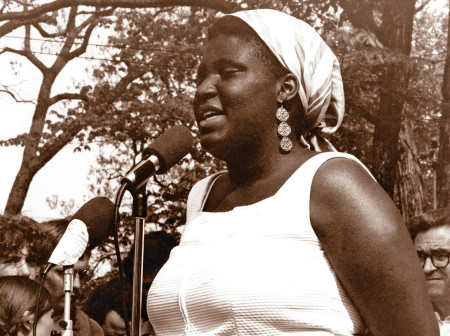I examine my blush pink tights and black leotard in the mirror at my childhood ballet studio, uneasy about the way the thin materials stretch over my hips and thighs. My hands tuck flyaway hair strands into my bun. I hear my ballet instructor’s voice in my ear, saying, You ladies have round, little girl stomachs. A ballerina’s stomach is concave.
I’ve been hearing these words in weekly rehearsals since before I was old enough to read the word “ballet.” Ballet taught me elegance, poise and balance. It also taught me to fear lifting weights.
One of the biggest stigmas about weightlifting is it makes women too bulky. But according to Dr. Mary Mulcahey, a sports orthopedic surgeon at Loyola University Chicago, that’s a myth. She says almost every woman would benefit from strength training.
“Teenage girls are so afraid of lifting and getting too ‘big,’” Mulcahey says. “But it’s not about big muscles – you don’t need those to still reap the benefits of strength and conditioning.”
For years, I only danced, stretched and ran. I was agile on my feet and flexible enough to wrap my leg around my head. I thought I was at peak performance. But I also suffered from chronic hip pain, and my knees popped every time they bent.
I tentatively picked up dumbbells my junior year of high school after my mom suggested my injuries may be due to lack of muscle. I was concerned I would do one week of weighted exercise and suddenly look like a bodybuilder instead of a ballerina, but I was willing to try.
For female athletes, Mulcahey says lifting offers benefits such as injury reduction and improved agility. She says the hardest step is walking through the door to a gym, but going with friends or starting a training program can lower the barrier.
“It has a big impact on your body image and confidence,” Mulcahey says. “It’s not even developing huge muscles, but when you start to see a bit of toning, you can see the fruits of your labor and the work you put in.”
As time went on and I found a routine, I started reaping the benefits. My knees felt smoother when I’d lower into pliés and my increasingly strong arms offered more stability in my pirouettes.
My appearance also changed when I started lifting – my shoulders broadened and my quads filled out. But I didn’t feel as upset about the differences as I had imagined. Knowing I was improving grew my confidence regardless of whether I was standing before a mirror.
I sometimes still hear my instructor’s voice in my head. But now a little voice argues back. It says, Look how much more my body can do when it’s not trying to shrink.



